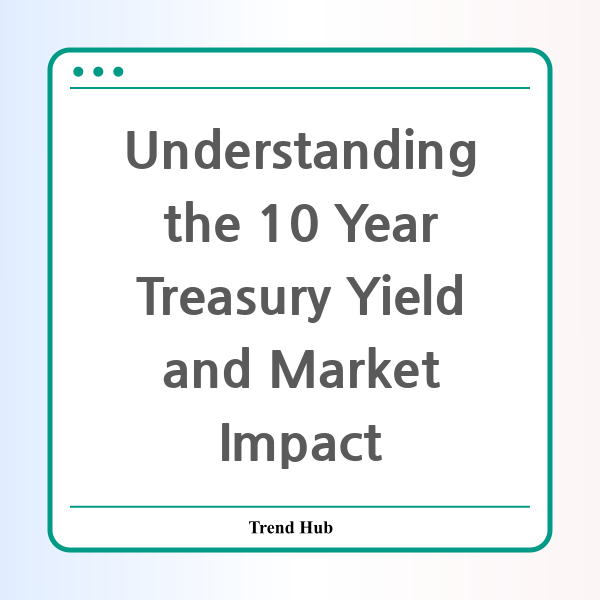* This website participates in the Amazon Affiliate Program and earns from qualifying purchases.

Are you concerned about the recent fluctuations in the 10-year treasury yield? As Wall Street faces a significant warning regarding US debt, understanding how these changes can impact the economy is crucial for investors and the general public alike.
Recently, Moody’s, a leading credit rating agency, has downgraded the United States' credit rating for the first time since 1917. This downgrade has sent shockwaves through the financial markets, raising alarm among investors regarding the safety of US debt, long considered a benchmark for stability. The 10-year treasury yield has soared to 4.5% as a direct reaction to this downgrade, showing that investors are becoming increasingly wary of American investments.
The implications of rising treasury yields cannot be overstated. As yields increase, the cost of borrowing for the government also rises, which can lead to higher interest rates across the economy. This can affect everything from mortgages to corporate loans, potentially putting a damper on consumer spending and economic growth.
The backdrop of this turmoil is a growing national debt, which has ballooned over the years, reaching unsustainable levels. The debt-to-GDP ratio is currently hovering around 92%. The warning sign presented by Moody’s is a reflection of the urgent need for fiscal reform, and without action, the consequences could be severe.
What does all this mean for investors? Historically, when treasury yields rise, stock prices tend to fall as the attractiveness of fixed income investments increases. In the wake of Moody’s downgrade, we’ve already seen a reaction: the Dow futures fell 350 points, and both the S&P 500 and Nasdaq indexes experienced significant declines. This cycle of volatility highlights the delicate balance that exists in the financial markets.
Key Impacts:
- Increased Cost of Borrowing: As yields rise, so do interest rates, potentially leading to higher payments on loans and mortgages.
- Investor Sentiment: The downgrade has caused a ripple effect, leading to increased selling of US Treasuries and a flight to traditional safe havens like gold, which has seen a price increase of 1.4% recently.
- Market Volatility: The fluctuations in treasury yields can result in increased market volatility, leaving investors uncertain about where to place their money.
Given the current climate, investors are turning to other assets for stability. In previous years, the trend has been to shift investments away from US stocks and bonds into foreign equities and commodities like gold. This "sell America" sentiment could continue if the perception of US financial stability continues to deteriorate.
The government must address its debt issues proactively; otherwise, market analysts warn of deeper repercussions that could emerge from Moody’s downgrade. Stakeholders in the economy, from policymakers to individual investors, must keep a watchful eye on developments to prepare for potential economic turmoil.
As we navigate these uncertain waters, being informed about the implications of the 10-year treasury yield and the factors affecting market stability is more important than ever. Consider these dynamics when planning your investment strategy, and stay tuned for further changes in this evolving economic landscape.
* This website participates in the Amazon Affiliate Program and earns from qualifying purchases.